Oni Overview
When I hear about mythology, my first thought goes to Greek mythology. People are at least a little familiar with the Greek gods and goddesses. But after that, my knowledge of other myths is minimal. Onien is a character in Japanese mythology that I was first introduced to in MTV's show "Teen Wolf". MTV is obviously not the biggest source of folklore. So I want to use this time to give an overview of what the Japanese Oni are and what they represent in Japan. Overall, Oni are characters resembling trolls or demons with yellow eyes that have horns coming out of their heads. In folklore, they are hungry for the blood of children who have not behaved badly.
Many cultures have a demonic figure to give the people something or something to fear. In Japan, Oni is their demonic, mythological figure. The idea of Oni is no longer just local to Japanese culture, it has made its presence in American culture as well. So let's take a look at the various myths and games in which Oni makes her presence known.
yokai
To begin with, Japanese folklore goes hand in hand with Yokai. Yokai encompasses all the supernatural beings present in Japanese folklore, at least to some degree. For the most part, Yokai includes demons, oni, shinigami, kitsune and many others. Also, most beings included in Yokai have the common characteristic that everyone is capable of shaping shifts. From the earliest form of the myths of the XNUMX century, beings described as Yokai were invisible to humans. Yokai is now the face of many manga and anime, along with art and shown in selected TV series.
Akuma
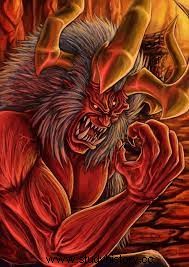
When I read Japanese Oni there, I found a character named Akuma. Before this research, I was only familiar with Akuma from video games, like Tekken. I will discuss this more later. If you were to translate the Japanese character for Akuma, it would translate to "demon". Akuma and Oni are two different ideas in Japanese mythology.
In Christianity, Akuma would be compared to the devil. In art, he is shown with horns coming out of his head and surrounded by fire. He is shown to be tall and superior to others, and to exercise his power.
Akuma Myth and Tekken
Tekken is a Japanese fighting game where this myth is present. There's a boss character that shows up, and this character is Akuma. I have included a picture of the characters to show how they are similar, but also different. When you see these two pictures side by side, there is red in both. This is to symbolize the fire of hell. Both are still powerful, frightening figures nonetheless.
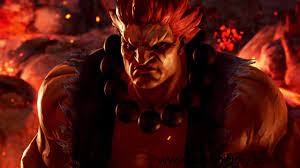
Mortal Kombat
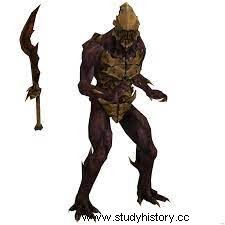
In the fashion for the Mortal Kombat movie that came out on April 23, Tekken was not the only game that has traces of Oni. Mortal Kombat is also a fighting game / movie franchise, and they have characters that are rooted in the Japanese Oni. Although I'm a beginner at Mortal Kombat's game, the same premise is to fight in an arena and need to be the winner. In one aspect of the franchise, there is a hierarchy of Oni acting as bosses. This is similar to Akuma being treated as the boss of Tekken.
In the video game, the onies have bright yellow eyes with horns coming from the head. This portrayal remains true to others. The reason for the missing horns in the picture is because in this game there are many species of Oni. There is also a story in this franchise where a character named Quan Chi is a former Oni.
Quan Chi
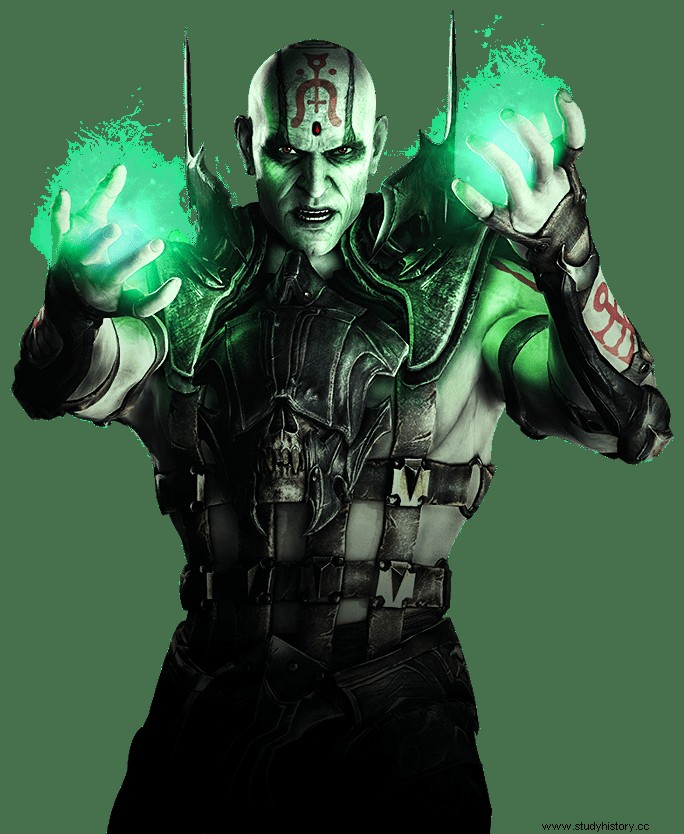
Quan Chi character in Mortal Kombat 11.
The character Quan Chi in Mortal Kombat is a specific antagonist. Because he's referred to as an antagonist, he's the villain. Unlike the other Oni characters, his eyes appear to have a red glow instead of a yellow glow. People in the fandom (strong fans of the game) describe him as the most powerful wizard ever (in Mortal Kombat's world, of course, the most powerful wizard, in my opinion, had to be Micky Mouse in "The Sorcerers' Apprentice").
Quan Chin's powers include transformation, stealing souls, resurrecting the dead, and he can even observe other realms. There are other powers he possesses, but this was just to name a few. Quan Chin was an Oni until he became so powerful in his sorcery, he was not an Oni character and is now a demon.
Meaning of the Oni Mask
The oni mask is quite well known in the culture. This is actually what made me realize that I wanted to do research.
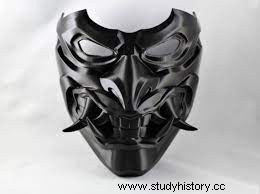
Oni. There is no typical "oni mask" or "proper mask". They come in many different colors and shapes. What is common among all masks is that they show ugly faces. Since they are ugly, the facial expressions are usually angry with clenched noses and typical horns as a symbol of demonic figures. When you play an Oni in the theater, acting with a mask on makes it easier to portray an evil creature. There are even theories that the use of the mask is due to the fact that reading the character means "hiding".
Decorative Oni Masks
There are also different types of masks. The masks are very popular as decoration today. This can be seen by simply examining "Oni Mask". Many pages come up showing different styles of masks, some showing the horns, some without. In Japanese culture, these masks are used to scare children. Today, people use them as decorations in their houses, and they even become popular tattoos.
Setsubun
At any time between February 2nd and 4th, the festival is called Setsubun or "Bean Throwing Festival"

The festival will keep the bad mood away and wish good luck into the home. To celebrate this festival, families let someone in the family dress up in an Oni mask and sing “Demons out! Good luck! "While listening to this folk song. To increase the belief that the spring season will bring good luck, the people who celebrate believe that if they say as many soybeans as their age, this gives them a better chance of a good season.
Oni and pop culture
In pop culture, Anime is becoming more popular among people in the United States. Just ask my housemates, it's our favorite pastime. There are many different types of Manga (Japanese comics or comics) or several anime, which include characters associated with yokai. For example, my favorite would be
"Death Note", which includes a figure called Shinigami or otherwise known as the spirit of death.
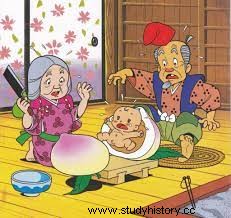
Momotarō peach boys
"The Peach Boy" is a fairy tale that shows Oni herself. The story follows Momotarō, which roughly translates to "Peach Boy". Although I have to fight against any urge to think of James and the Giant Peach, the stories are not the least bit related. Apart from the part where James more or less lived in the peach, Momotarō is delivered to his parents in a peach.
When he gets older, around 15 years old, he embarks on a journey. The journey goes to Orge Island, where Oni lives. To help keep his country safe, he decided to go and fight Orges and bring back taxes. Throughout the journey, Momotarō becomes friends with talking animals that help him along the way. This includes a dog, money and a pheasant.
Through teamwork, the four managed to defeat Orges (or oni) and they promised to stop being evil. After returning home, Peach Boy brought wealth to his family, and they lived happily ever after.
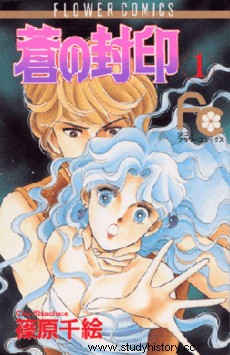
Ao no Fuuin
Another magna that shows Oni is "Ao no Fuuin" which translates to Blue Seal. The cartoon follows Kiryuu Souko, who is new to the city and is extremely beautiful. When, in fact, Souko is actually the reincarnation of Ragou. Ragou is a beautiful immortal who rules the demons and trolls on earth.The person that Souko falls in love with, Akira, is destined for an eternal war with Souko and her family.
The difference between families is that although Souko is immortal, Akira is not their family, but has only superhuman qualities. It follows the two who try to find ways to make Souko human in order to stop her from becoming the new leader of the demon clan. This magna shows many genres, from love to fantasy, all while following the demon queen, and as we have established, oni is just a form of yokai that includes demons and trolls. Ao no Fuuin has many teams and can hold the readers' attention. I think this will be my next goal to read!
Dungeons and Dragons
If you're a dedicated fan of a popular game Dungeons and Dragons (or D&D), I hope you a
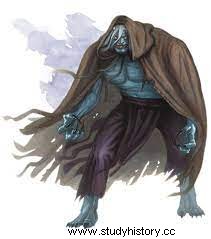
is familiar with the fact that Oni is present in the game. D&D has been referenced (or modified by copyright) in Wizards of Waveryly Place and Riverdale. Although these shows do not refer directly to Oni, they are still part of the interactive mythical game.
Although I'm a beginner at everything in D&D, I let those who can actually analyze Oni's statistics do so. I'll just give you an overview. The oni character in the game shares the same look that I have seen. Looks a lot like a troll with yellow glowing eyes. They are also able to form shifts, which helps with their hunger for blood.
Onies are magical creatures, so they are able to cast spells of invisibility, they can also charm others. For Oni, this is beneficial, because then it allows them to manipulate others to get what they want. Oni are inherently selfish and seek to satisfy their own needs.
MTVs Teen Wolf &Kitsune
Since I started by mentioning Teen Wolf, it seemed appropriate that this come full circle. Teen Wolf follows many mythical creatures, such as werewolves, banshees, hell dogs and more. Not to be biased, but the season
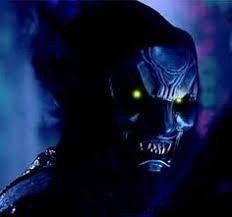
which contained Oni was by far the best. The trend of Oni being creatures with glowing yellow eyes continues into the show. Although the horns are not present on the masks they are wearing, the figures emit a black smoke that shows the horns.
The difference between the myth and the show was that Oni here protected what was called a "Nogitsune". This is a wild fox spirit that has taken possession of humans. Oni wanted to keep it enclosed in all necessary ways.
Anthropology and culture today
In Japan, the Oni myth is present everywhere. We have seen this through the soy festival (which I now put on my bucket list to watch in person), video games and TV. Seeing the different ways ideas are presented in a culture, for example, paranormal things are so fascinating.
I have never thought about how other cultures viewed the Devil or other beings of that kind. After all the research I have done on Oni, the myths people grow up with in Japan seem very engaging (and scary, as they are meant to be).
